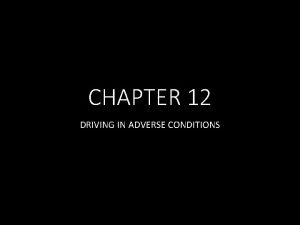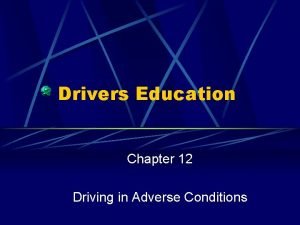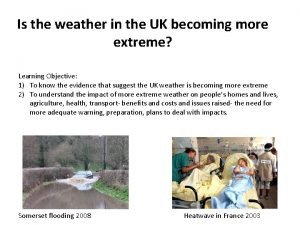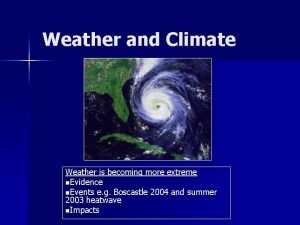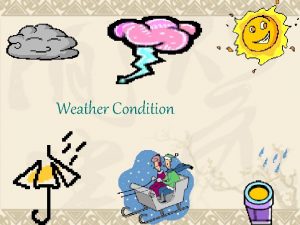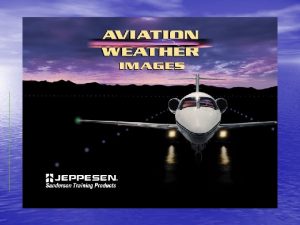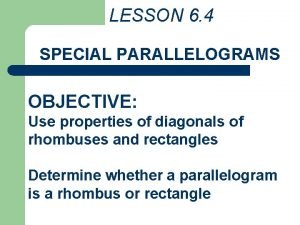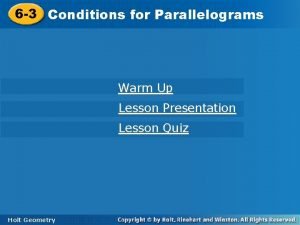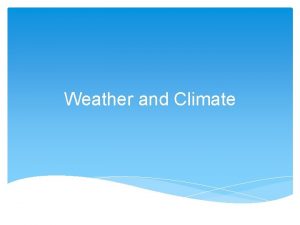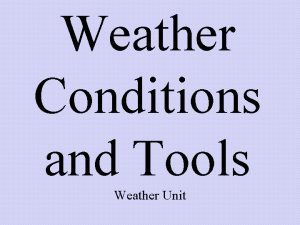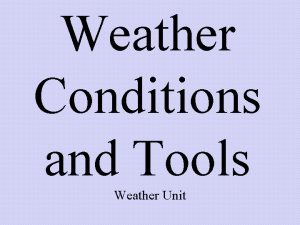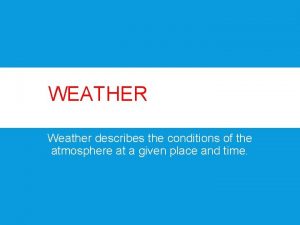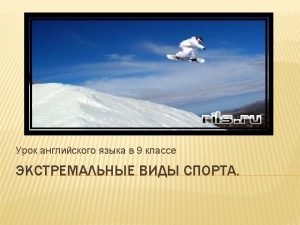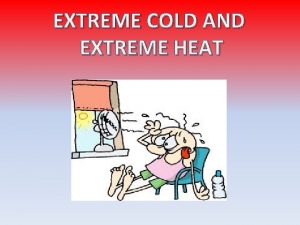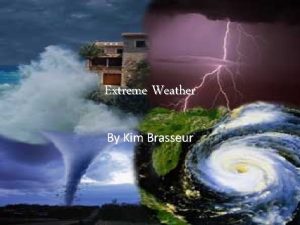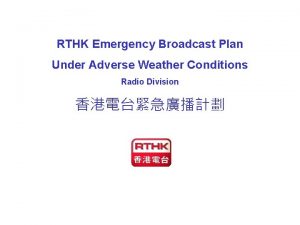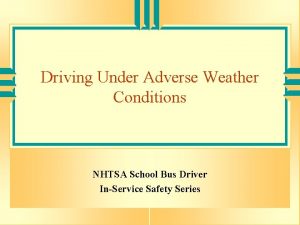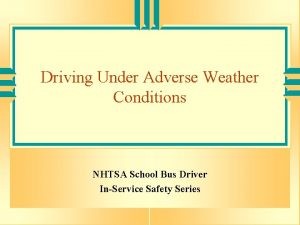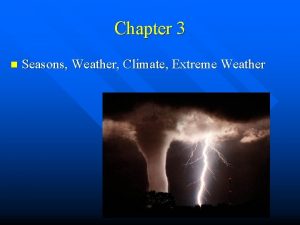lesson 12 3 OTHER ADVERSE WEATHER CONDITIONS Extreme

























- Slides: 25

lesson 12. 3 OTHER ADVERSE WEATHER CONDITIONS Extreme weather conditions can make routine driving very difficult.

OBJECTIVE Explain how to maintain control of your vehicle in windy conditions.

Other adverse conditions such as wind, extreme temperatures, and winter weather may also affect the control you have while driving.

Wind Strong winds can reduce your vehicle control and push lightweight vehicles out of the lane or even off the road. Keep a balanced grip on the steering wheel and be ready to make steering corrections for crosswinds. Sometimes a passing truck can produce a strong blast of wind.

In the unlikely event you are in an area where tornadoes are spotted, be ready to act. The last place you want to be in a tornado is in a car. If you see a tornado, stop, get out of your vehicle, and lay down in a ditch.

It’s very windy and your car is moving from left to right. What should you predict once the truck on the left has completely passed you?

OBJECTIVE List precautions for driving in extremely hot or cold weather.

Hot Weather Your vehicle has a cooling system to help it warm up in winter and stay cool in the summer. In extreme conditions, problems can develop.

Your temperature light or gauge indicates when your engine is too hot. When this happens, turn off your air conditioner. If the engine temperature warning light stays on, stop and park in a safe place to let the engine cool. Once cool, check the coolant level in your cooling-system surge tank. Never remove the radiator cap on a hot engine because the hot liquid inside can scald you.

Cold Weather Very cold weather creates problems for vehicles.

Be Alert for Exhaust Leaks Carbon monoxide gas is created when your engine runs. This gas is colorless, odorless, and deadly. Even a small exhaust leak can be dangerous. When driving, always have a source of fresh air coming into your vehicle—even if you have to open a window a little.

If you are stuck in snow with your engine running, make sure your exhaust pipe, or tailpipe, is not blocked. Why is it a good idea to clear deep snow away from your tailpipe?

Do Not Race a Cold Engine Racing a cold engine will increase wear on it. Do not run a cold engine at high speeds.

Do Not Set Your Parking Brake Ice or slush stuck to the underside of your vehicle can freeze your parking brake when you park your vehicle. In these conditions, use your automatic transmission PARK gear, or the REVERSE gear with a standard transmission.

drive green Idling When warming your vehicle in cold weather, avoid excessive idling. Excessive idling can overheat a vehicle’s engine, waste fuel, and add air pollution.

OBJECTIVE Describe what to do to maintain vehicle control during winter driving.

Tips for Smooth Winter Driving Winter driving will test the best of your IPDE driving skills. The extra effort you make to maintain an adequate line of sight is worth it. The following tips will help make winter driving a smooth process.

Look and Listen for Traffic Reports Be alert to television and radio reports about collisions, road repairs, and bad weather. You also can take advantage of Internet sources.

Keep Windows Clear Remove snow and ice before driving. Be sure to clear your windows, roof, hood, trunk, headlights, and taillights of snow and ice. You do not want snow to blow off and block your vision or become a hazard to vehicles behind you. The copyright holder has not granted permission to display this photograph in a downloadable format. You may view the photograph in the Drive Right Presentation for this lesson on your Keys to Teaching Success disc.

Respect Lower Speeds Travel with the flow of traffic, but always maintain control of your vehicle.

Keep a Safe Following Distance Allow six, seven, or more seconds of following distance just to make sure you have room.

Try to Keep Moving in Snow If you drive in a blizzard, be alert for drivers who are stalled, disabled, or moving extremely slowly. Avoid getting stuck behind them. Slow down and maneuver to avoid others and to keep moving. The energy of motion created by your moving vehicle can help carry you through snowy situations.

Use a Lower Gear on Slippery Roads Use a lower gear to maintain control on ice or snow. Remember to keep moving to avoid getting stuck.

Avoid Cruise Control Do not use cruise control on slippery roads. The system could cause you to lose control.

lesson 12. 3 review 1. What actions must you take to maintain vehicle control in strong winds? 2. Why should you try to keep moving at low speeds in heavy snow?
 To give yourself more time for the ipde process at night,
To give yourself more time for the ipde process at night, Chapter 12 driving in adverse conditions
Chapter 12 driving in adverse conditions What is overdriving your headlights mean
What is overdriving your headlights mean Chapter 12 driving in adverse conditions
Chapter 12 driving in adverse conditions Extreme wide shot vs wide shot
Extreme wide shot vs wide shot Why is uk weather becoming more extreme
Why is uk weather becoming more extreme Weather in boscastle
Weather in boscastle Weather forecasts lesson 3 outline answers
Weather forecasts lesson 3 outline answers Name a weather condition
Name a weather condition What causes warm air to rise brainpop
What causes warm air to rise brainpop Imc conditions definition
Imc conditions definition The weather conditions of a particular place
The weather conditions of a particular place The average weather conditions of a place
The average weather conditions of a place Average weather conditions over time
Average weather conditions over time Station model thunderstorm symbol
Station model thunderstorm symbol Tongue twister whether the weather
Tongue twister whether the weather Her poem clothing
Her poem clothing It's windy weather it's stormy weather
It's windy weather it's stormy weather Whether the weather is fine
Whether the weather is fine Heavy weather by weather report
Heavy weather by weather report Capital weather gang weather wall
Capital weather gang weather wall Self-initiated other-repair
Self-initiated other-repair Lesson 4 properties of rhombuses, rectangles, and squares
Lesson 4 properties of rhombuses, rectangles, and squares Lesson 6-4 properties of special parallelograms
Lesson 6-4 properties of special parallelograms 6-3 lesson quiz properties of parallelograms
6-3 lesson quiz properties of parallelograms 6.5 conditions for special parallelograms worksheet answers
6.5 conditions for special parallelograms worksheet answers
